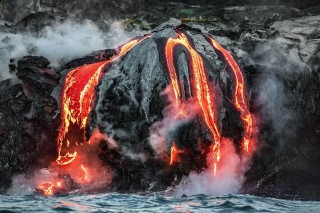Tiny Giants Of The Sea
Jellyfish are a class of organisms belonging to the subphylum Cnidaria within the phylum Coelenterata.
They have a wide distribution in the world's oceans, and some species can also be found in freshwater environments.
The body of a jellyfish is typically umbrella-shaped, consisting of a central dome and tentacles that extend vertically.
The tentacles of jellyfish contain numerous small stinging cells known as cnidocytes, which contain venom and are used to paralyze or capture prey.
When the tentacles of a jellyfish come into contact with prey or other stimuli, the cnidocytes release venom, immobilizing the prey for consumption.
There are various species of jellyfish, exhibiting a range of sizes and shapes. Some jellyfish are tiny, measuring only a few millimeters, while others can grow to several meters or even larger. They also display a diverse array of colors, with some being transparent or light-colored, while others exhibit vibrant hues.
Jellyfish play a crucial role in the marine food chain, as they feed on plankton and small fish. They are also integral components of marine ecosystems, contributing to the maintenance of biodiversity and ecological balance.
However, it is important to note that certain jellyfish species pose a threat to humans due to their stinging cells. Contact with these stinging cells can result in pain, burning sensations, and even allergic reactions. Therefore, it is essential to exercise caution and avoid direct contact with jellyfish during ocean activities.
The peach blossom jellyfish, classified as a freshwater jellyfish, belongs to the jellyfish family within the biological classification system.
It is the smallest known jellyfish in the world, with a diameter of no more than two centimeters, roughly the size of a coin. These jellyfish can be kept in fish tanks for ornamental purposes.
Peach blossom jellyfish are widely distributed around the globe. They can be found in European countries such as France, Germany, Italy, and Spain, as well as in Australia, located in Oceania. They are also present in the wild waters of countries like Chile, Panama, and Canada in the Americas.
Despite their unassuming nature, peach blossom jellyfish are one of the oldest known creatures on Earth. Fossil evidence suggests that jellyfish appeared approximately 550 million years ago, making them true living fossils.
Over the course of their existence, peach blossom jellyfish have maintained a relatively stable form, resembling their ancient counterparts.
Cultivating peach blossom jellyfish has developed into a small-scale industry due to their ease of domestication and high ornamental value.
Moreover, psychologists believe that prolonged observation of jellyfish can have a soothing effect on the mind and be beneficial in treating depression.
You may like:


